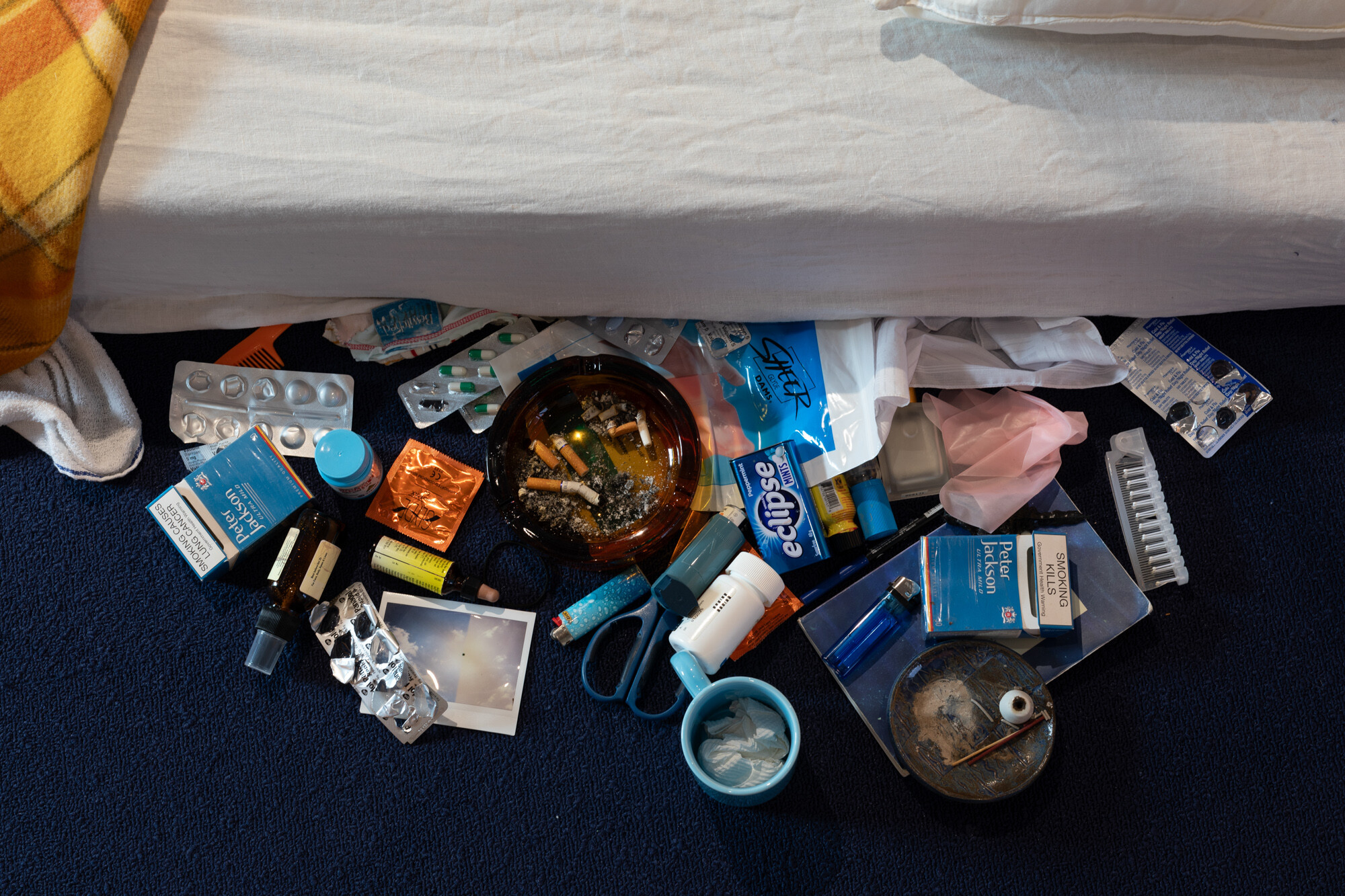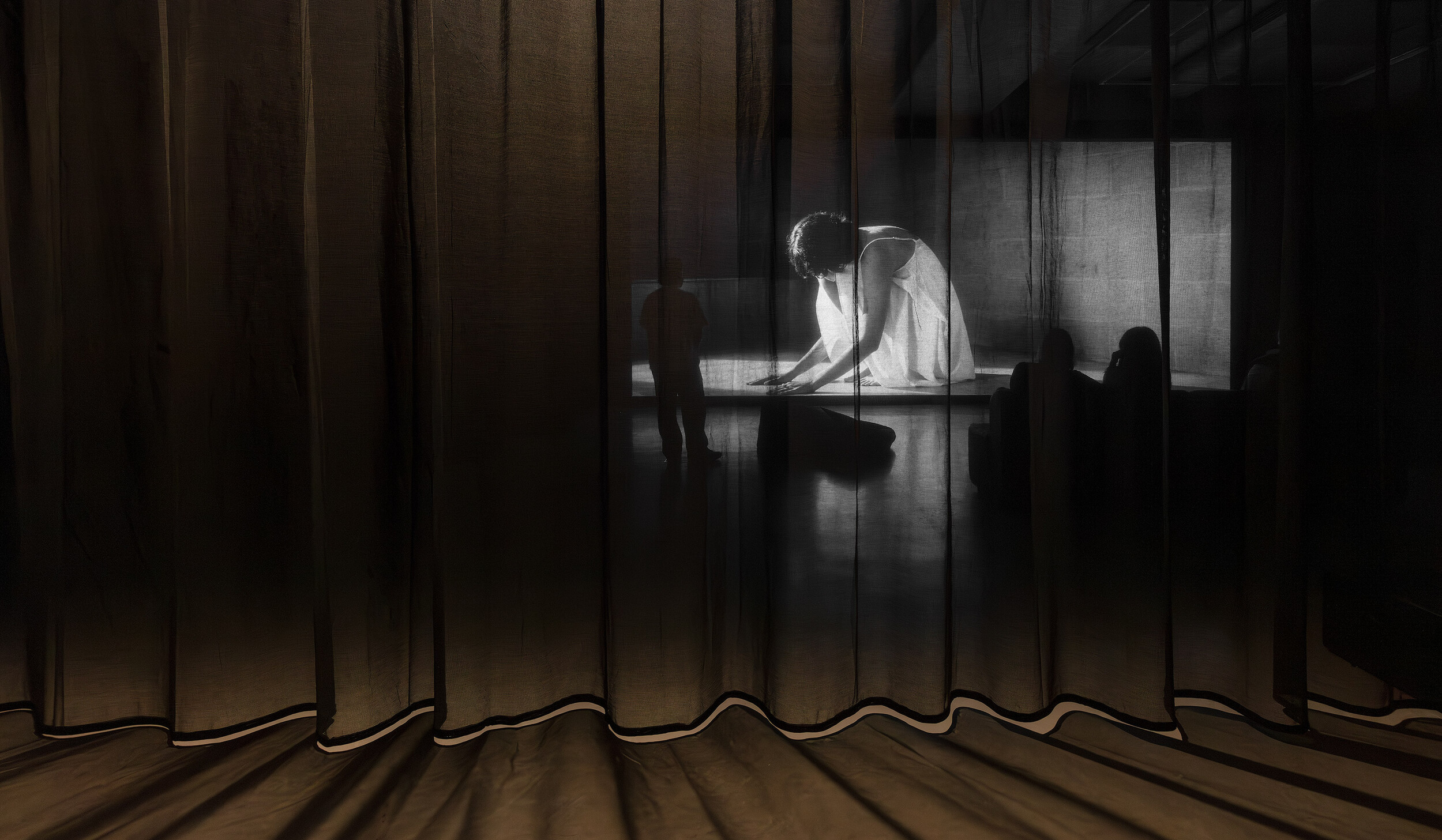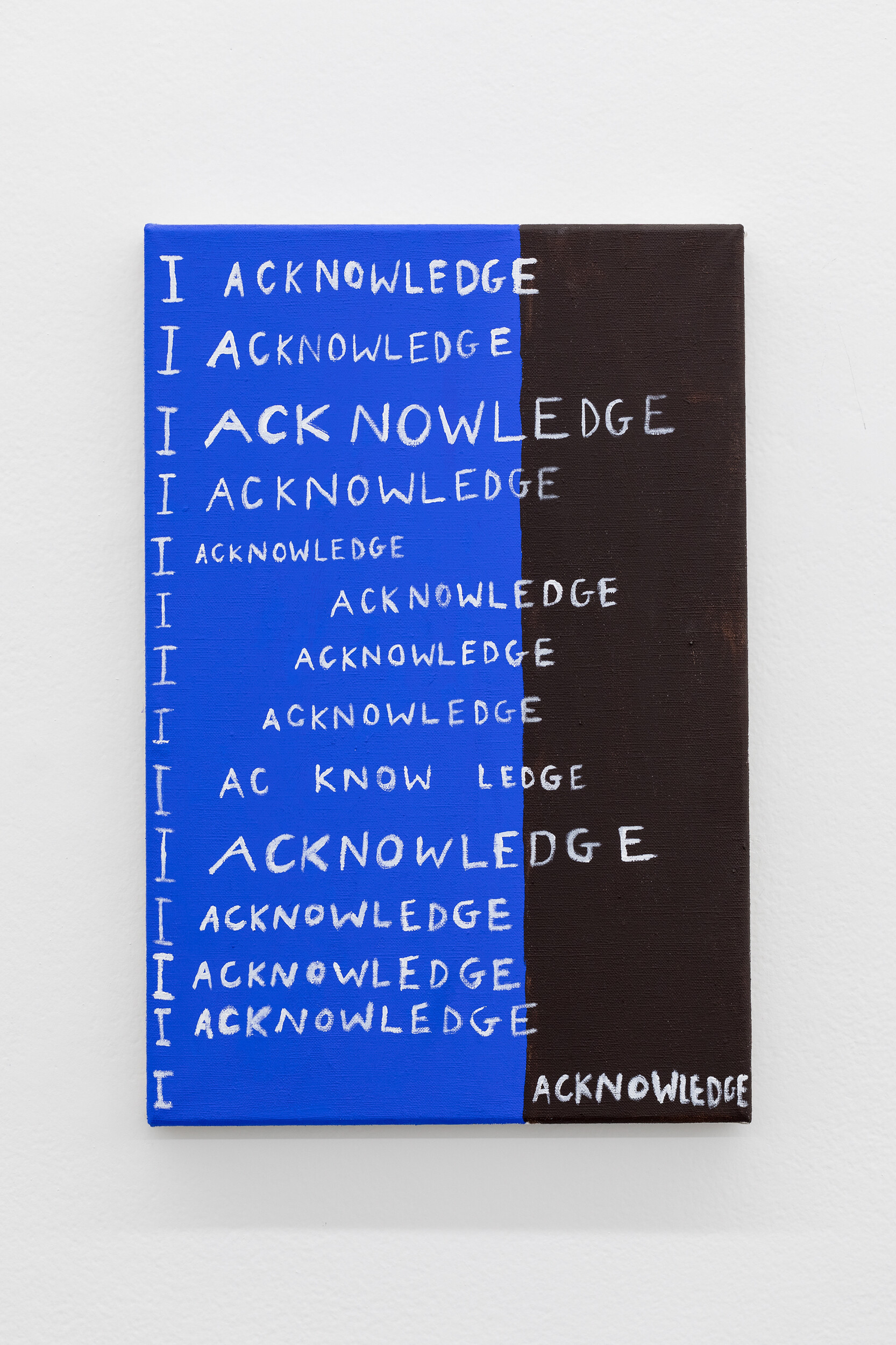Installation view of Jesse Wakenshaw, DUST, 2025, Airspace Projects. Photo: Jesse Wakenshaw.
DUST
Jennifer Yang
When Jesse Wakenshaw and I first met, it was on the shop floor of a cosmetics retailer. It is a small but popular store, and our only conversations take place in-between frenetic swells of beauty shoppers. We flit from mirror to mirror with bottles of foundation in hand. Here is a dazzling and insular space of shiny gondolas and merchandise where customers can begin to fathom that their most pressing charge is to find a very nice lipstick. The lulls, when they do come, are testing grounds for worker-to-worker social encounters. Wakenshaw and I sometimes talk about smells.
I list ones I have been liking: palo santo, clary sage, green pepper. Wakenshaw will nod, “ah”, or pause in thought. He might point out the tendency for neroli-heavy scents to take on a soapy facet, or to a hint of an alliaceous selenium in a plumping lip oil. But scent, for me, is nearly always discussed in reference to some ready-made perfume on our shelving displays. For Wakenshaw, scent is fluid and amorphous. It is also totally constructed. A neroli might be touched with cumin; a truer and more indolic approximation of jasmine sambac will veer toward the faecal; and he describes to me something he is working on that smells just like metallic dust.
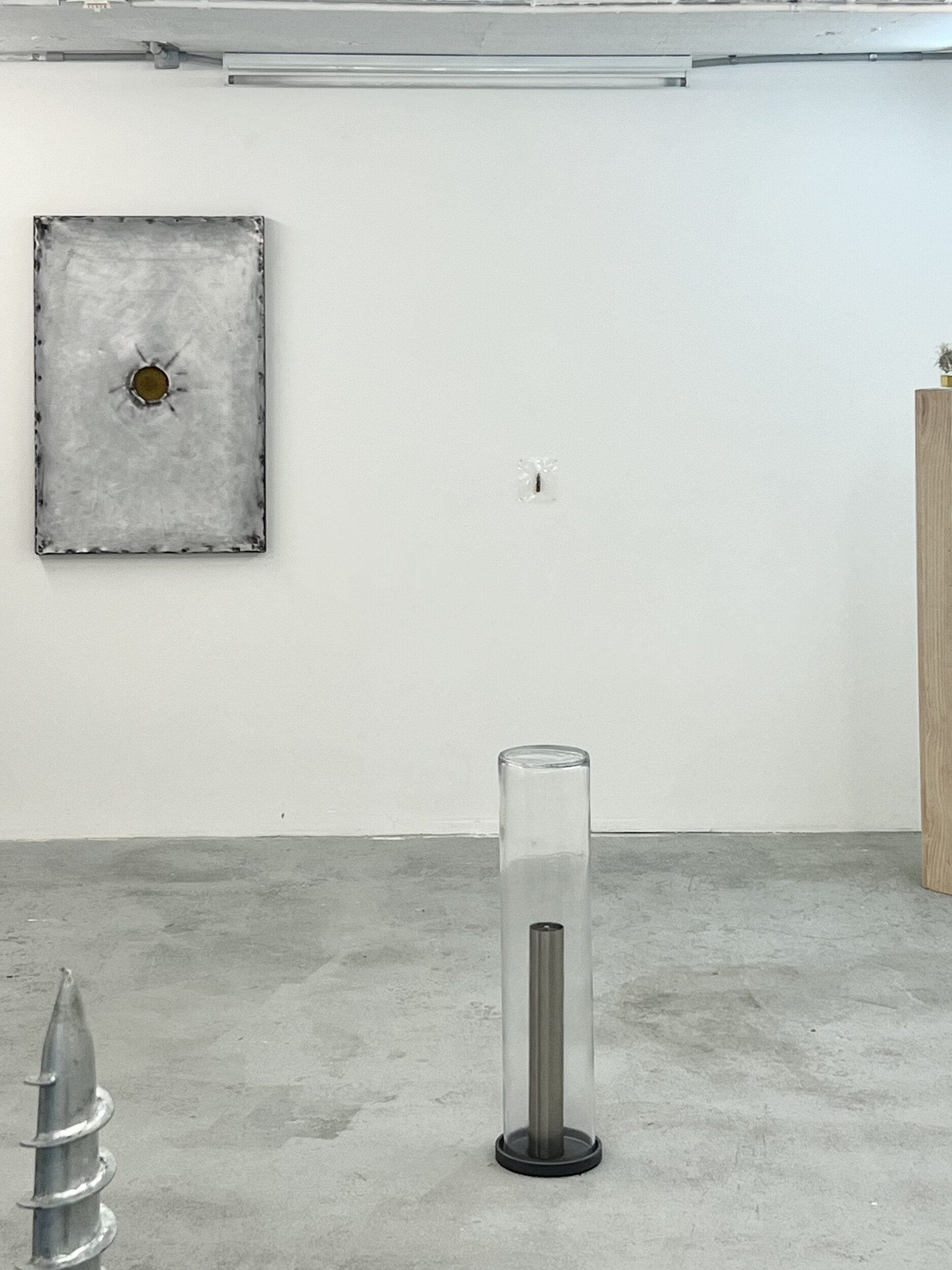
Installation view of Jesse Wakenshaw, DUST, 2025, Airspace Projects. Photo: Jesse Wakenshaw.
DUST, Wakenshaw’s solo exhibition in Airspace’s lower floor, is like a crime scene—vacated of bodies but brimming with traces of the bodily. Broken plaster shards litter the ground in one corner. Nearby, I can spot glass beakers and bottles of dark liquid (oakwood) and the metal tabs of beer cans macerating in a tincture of strata hops. A makeshift butt plug with a hot pink beauty blender doubling as its stopper juts out from the wall, and a jockstrap dangles from the ceiling. The vibe is sexy, scary, and slapstick.
The act of walking around these ruins feels akin to witnessing the physical traces of a body subjected to violence and sexual surveillance. Each random object, spike, spile, screw, and hole performs a repression of the body or denotes its failure to conform. The impenetrable materials of metal and timber—Wakenshaw grew up in a family of carpenters—are constructed in relation to soft and succumbing flesh, as a form of control and possession, or pleasure, or all. These sculptural forms contort between the hypermasculine and the phallic—see the dumbbell in Main Stage Mirage, My Religion is Popstar (2025) and the steel pipe ejaculating fog in Folly (2025)—and a contrived, regulated femininity, as in the Victorian investment of purity in the mythic chastity belt in Jock Itch (2025).
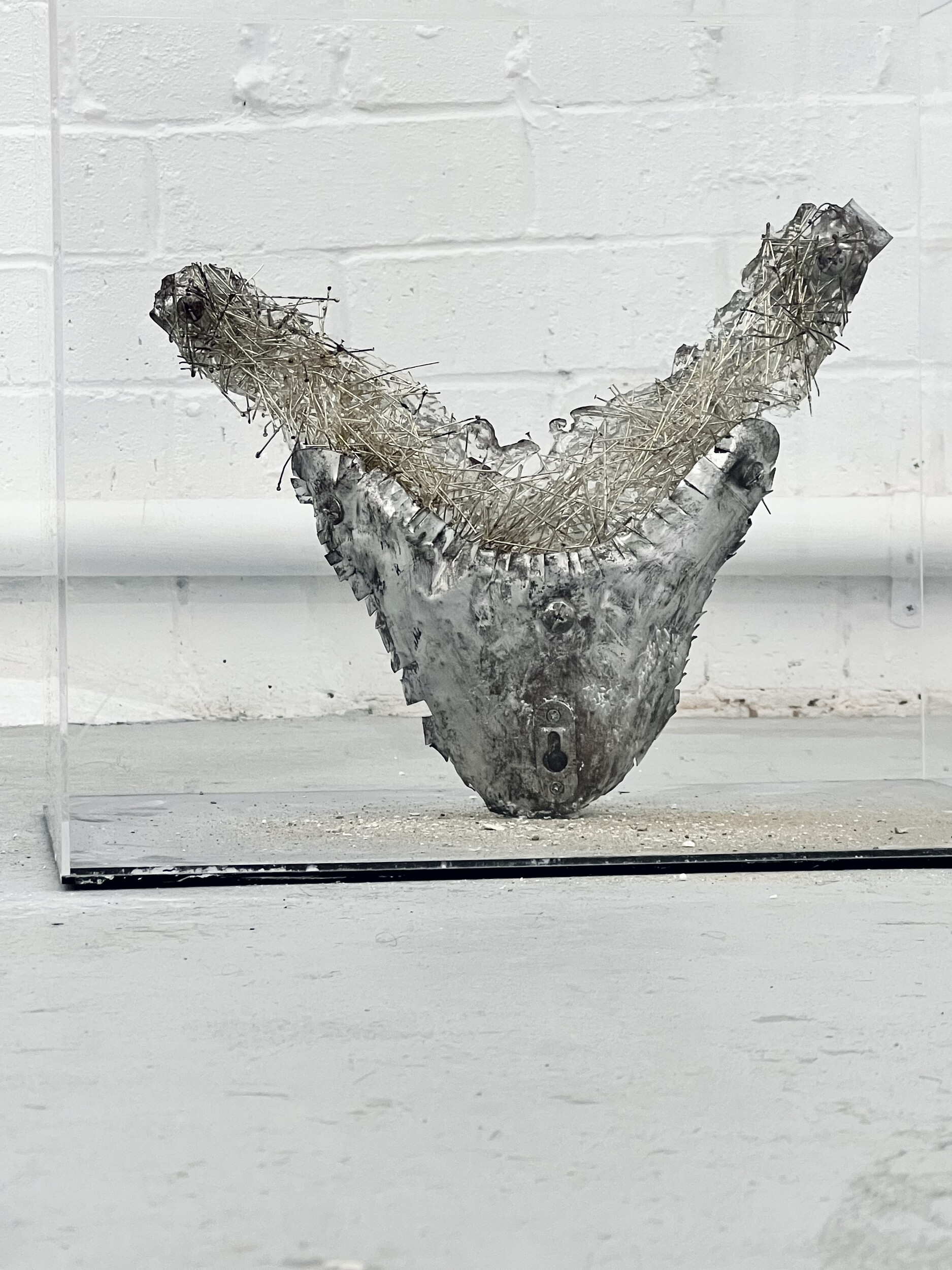
Detail of Jesse Wakenshaw, Jock Itch, 2025, dimensions variable, epoxy resin, stainless steel jewellery posts, aluminium, screws, scent, Airspace Projects. Photo: Jesse Wakenshaw.
Experiencing DUST feels forensic because it demands more from the viewer than a cursory visual assessment. But just as it invites a logic of detection, DUST asks also for vulnerability. At the opening, each viewer kneels and bends to smell the scented felt stickers paired to the sculptural forms. For Pleasure Portal (2025) fragranced with Sealed in Velvet Dust (2025) we offer our faces to a huge aluminium glory hole with notes of rose maroc, labdanum, costus, and davana at its centre. Wakenshaw is at pains to trouble the static nature of the heavy industrial materials he has been working with. Scent does not merely lead us closer to the sculptural forms, instructing us on how to position our bodies in relation to them, it also extends form beyond its hard, outermost casing.
When the scent itself is encased (or tenderly armoured, as Wakenshaw phrases it)—as in the line-up of extraits de parfum on a shelf at nose-height—it is a little friendlier, and more enticing. At the opening, this proves to be the most popular section, probably for its resemblance to commercial perfumes one might see on a store shelf. Noses travel down the line of bottles. My notes, in order from left to right:
Sweet, musty, liquor
Citrus? Fruity, bright
Saliva, salt
Medicinal, leathery
Grass
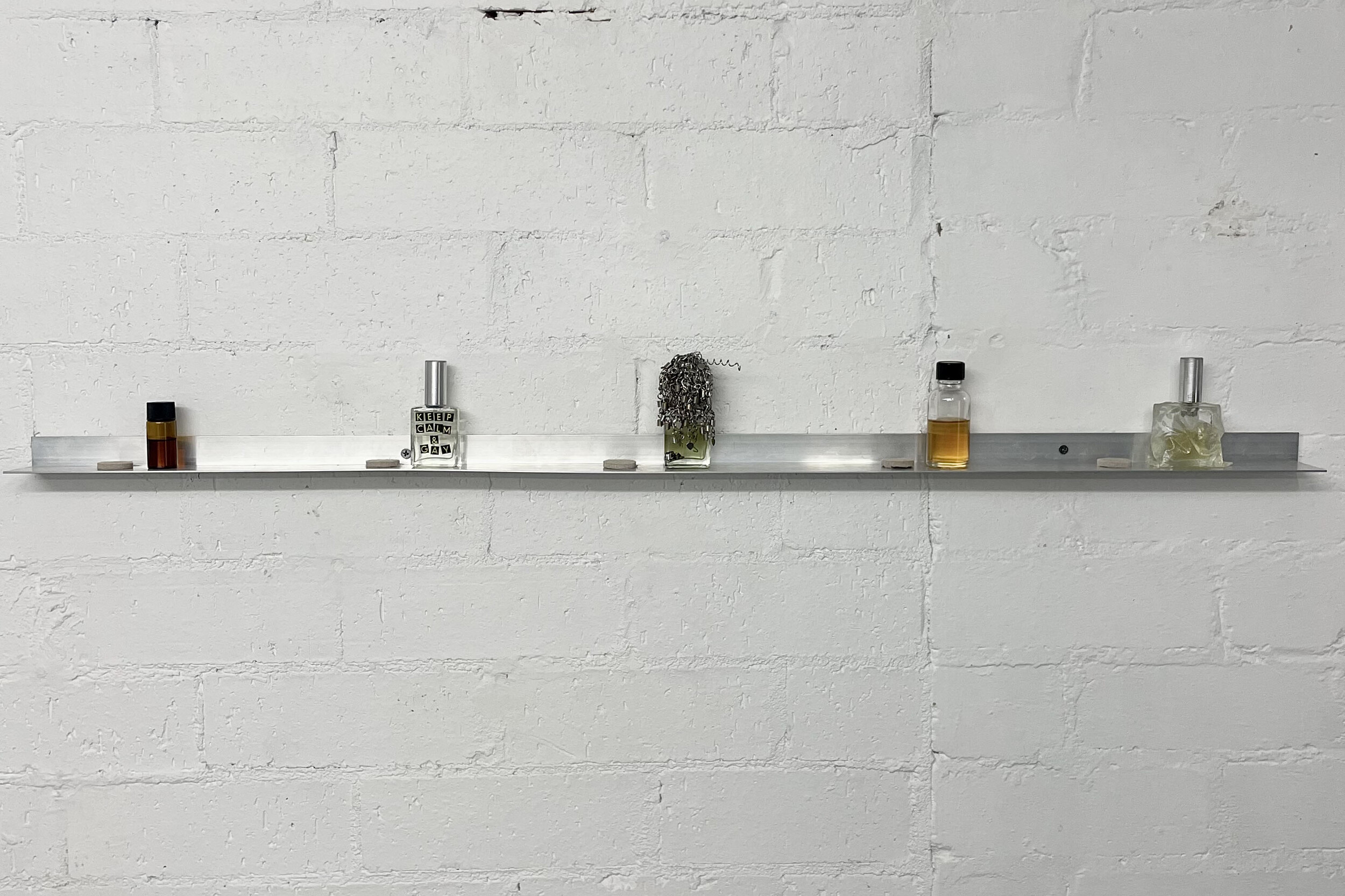
Installation view of Jesse Wakenshaw, DUST, 2025, Airspace Projects. Photo: Jennifer Yang.
To the consumer, these are bizarre smells. If I were to guess why, I’d say it’s because they are oddly close to the body and its desires. The person behind me describes it better when they admit, “I feel aroused and scared at the same time.” Clearly, to smell is to yield to this intimacy. Many of the extraits do involve a fantastical interplay of the gourmand (think vanilla and tonka bean), spice (like cumin), and the animalic (civet, musk). But Wakenshaw is approximating an eroticism that makes sensible the blurred thresholds between pleasure, disgust, and pain. These are scents evoking secretion and bodily residues—for instance, the meeting of something antiseptic but a little rotted, in the replication of a Band-Aid note, or a parody of, well, hot nut(s), in the coalescence of milk, green pepper, metal, saffron attar, and pyrazine in Hot nuts (2025). One note transforms the other. Something as bright and sweet as strawberry aldehyde feels illicit, euphoric when added to sulfuric and smoky prenyl mercaptan. The sharpness of fir needle and pine pierces through slick and resinous olibanum. What I have interpreted to be saliva is, to Wakenshaw, a briny marine accord formed through notes of oyster and red seaweed absolute against (warm and romantic) cashmeran and (salty) ambroxan—this is Splash (2025), as in Ron Howard’s 1984 film where a young Tom Hanks falls in love with a mermaid.
Scent, like the body, is operating in disalignment—it is not polite or inoffensive, but it resists containment and all our attempts to control it and deodorise it. It is seditious in that way, and it seeps and lingers. It may be weaponised, racialised, sexualised, regulated in giant industries of personal care and public sanitation, or commodified. But smell, as Wakenshaw formulates it, exceeds and outlasts all these casings.
I asked Wakenshaw, why perfume? He told me that it is because smells endure. In our shop, people are always strategising ways to slow the evaporation of a scent off the skin. Many a wearer will turn to us after dousing themselves in Jazz Club, maybe, and, with a doubtful look, ask, “but how long will this even last?” The ever-apparent risk of spending a large amount of money on a perfume is that the smell won’t stay, won’t project enough to be noticed, and so neither will its wearer. But Wakenshaw is talking about survival and not permanence. The risk here is not of disappearance, or dissipation, but of the violence that accompanies vision. More precisely, it is the real danger of being too visible, “outed”, of the identification and subjugation of the queer body.
These risks take on more insidious forms in the more removed arenas of governance, institutional organisation, and business. Visibility on its own is violent, fickle, and futile. Look, for example, to the quiet withdrawal of corporate sponsors from Pride Month amid the dismantling of DEI programs and the legislative erasure of trans people under the Trump administration. The false neoliberal promises of progress and diversity discourse—in which visibility, or marketability, is correlated to power—are quickly eroding, everywhere, against the rise of far right and fascist ideologies. I think, culturally, we are yearning for some kind of retreat from these (hyper)visible modes of engagement and agonising over whether extrication is at all possible. I think of this when I’m on the internet (all the time), in the cinema, three hours before the opening, wondering if Dakota Johnson can really choose Chris Evans (love) over Pedro Pascal (capital), and in the shiny shop the day after.
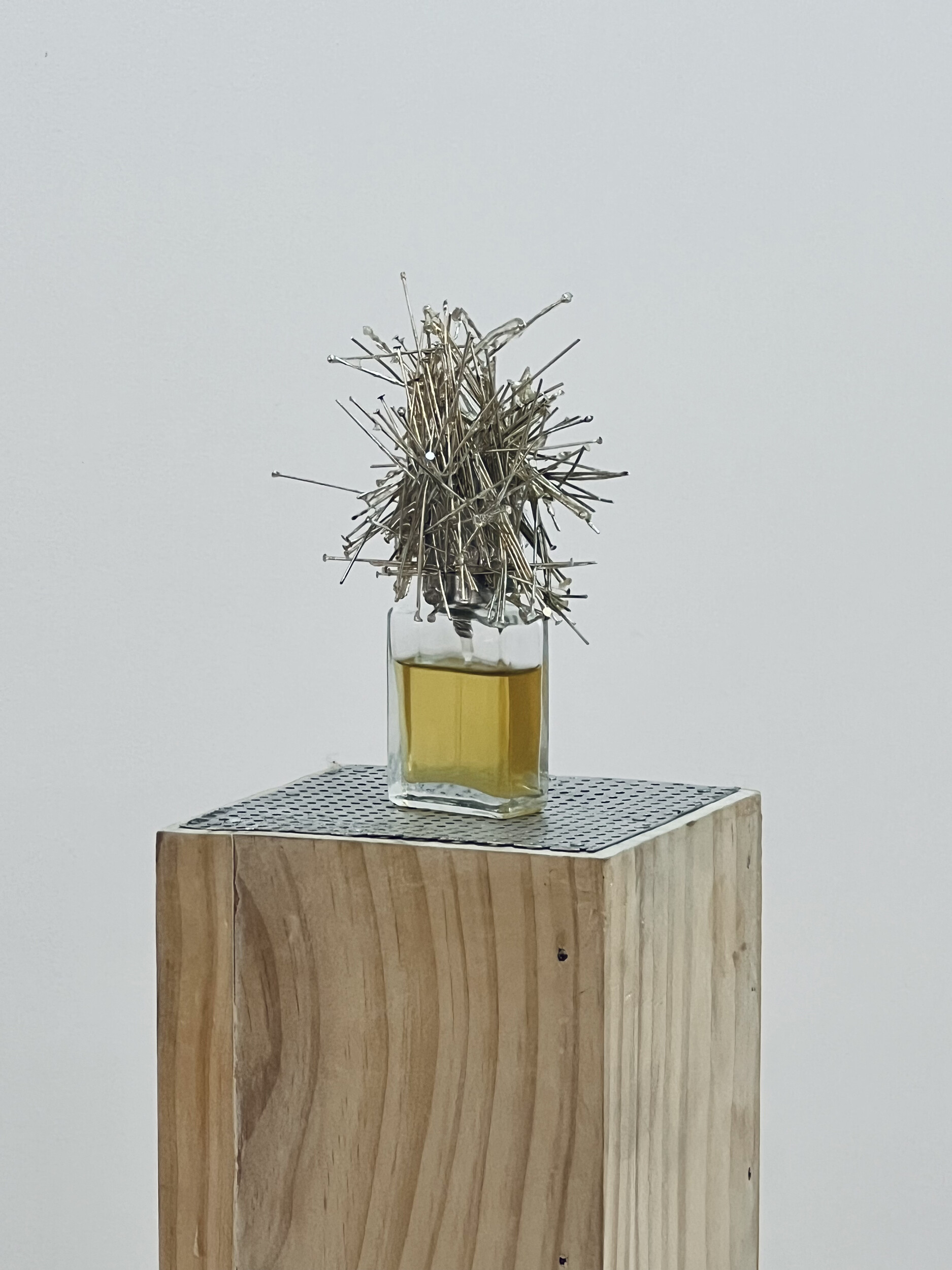
Detail of Jesse Wakenshaw, Pillar of collapse, 2025, dimensions variable, epoxy resin, glass bottle, stainless steel jewellery posts, scent: Chaos extrait de parfum 15 ml, Airspace Projects. Photo: Jesse Wakenshaw.
In the basement of Airspace, I am just about kneeling on the ground with my head completely turned toward the ceiling to smell Primal Blossom (2025): a blotter teetering on the end of a thin metal pole piercing through a large steel screw. This one is infused with that indolic white floral and a green carnation note: Wakenshaw’s nod to Oscar Wilde’s queer-coded boutonnière of choice. Even in this scene of ruin, there is evidence of resistance and the poetics of yearning. DUST considers how scent might allow one to exist in the precarious and tender state prior to becoming visible, offering a more fluid form that might transmute our bodily selves into.
An aroma chemical cannot be seen. It does not answer to spectacle, but it lingers in the aftermath. Wakenshaw is not interested in constructing a new world, but in working from remains and failure. Scent offers a way through, not out. Perfume, in all senses of the word, is a dust, vapour, smoke; it is also an act of burning and smoking. In this process of transmutation—of becoming light, invisible gaseous matter or free-floating particles of dust—one might set down all the excesses produced under the scrutiny of the gaze.
Jennifer Yang is a Gadigal/Sydney-based writer. She is currently undertaking a Phd in Art History at the University of Sydney.
